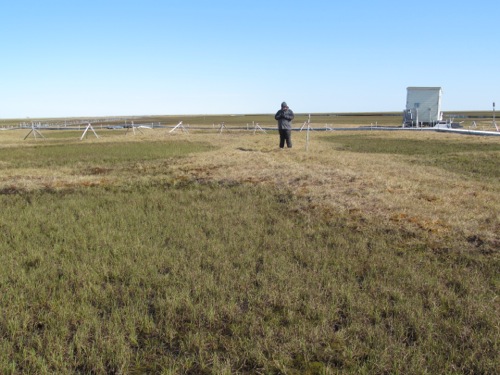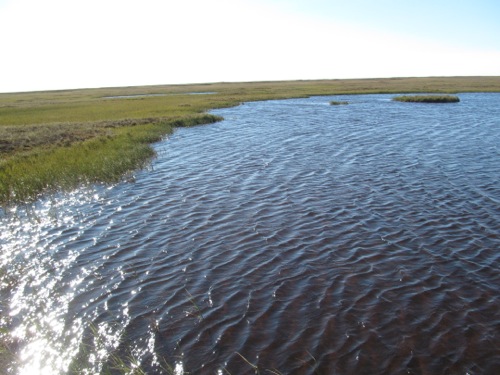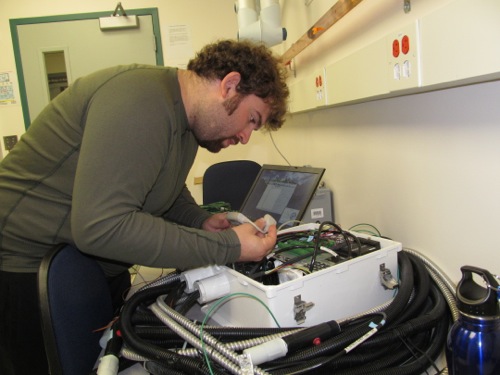The site where we're conducting the research is called the BEO (Barrow Environmental ObservatoryA location used for observing terrestrial and/or celestial events.). The BEO is 7,466 acres of arctic tundra permanently dedicated to scientific research. The land that comprises the BEO was donated by the Inupiat Eskimo people, who recognized the importance of and encouraged arctic research.
What is a TundraA treeless area between the icecap and the tree line of arctic regions, having a permanently frozen subsoil and supporting low-growing vegetation such as lichens, mosses, and stunted shrubs.?
The tundra is a type of biome with extremely cold weather, a short growing season, and a permanently frozen subsoil called permafrost. The few plants that grow tend to be low-growing plants, shrubs, and maybe a few short trees. When the weather does warm up (if you call 40 degrees Fahrenheit warm) during the summer, the ground tends to be soggy (or boggy, as it's called) because water cannot drain away due to the underlying permafrost.

Science in the BEO
Hundreds of scientists a year visit the BEO in order to conduct valuable arctic research. My researcher, Elliot Friedman, is one of these scientists. Elliot is studying anaerobic microorganisms - that's organisms that don't require oxygen for respiration. (Respiration is the metabolic process by which food is converted into energy.) In fact, sometimes even the presence of oxygen can kill the organism. The converse is aerobic- that's organisms that use oxygen for respiration.
As the permafrost thaws, anaerobic microorganisms in the soil emit greenhouse gases, such as carbon dioxide and methane, as part of their respiration process. As part of his research, Elliot will perform experiments to help understand what will happen as climate change continues.

During these experiments we will observe what happens to the bacteria by monitoring their respiration and the greenhouse gases emitted from the soil, as well as other parameters important for bacteria, such as, pH, temperature, conductivity, and dissolved oxygen levels.



Comments